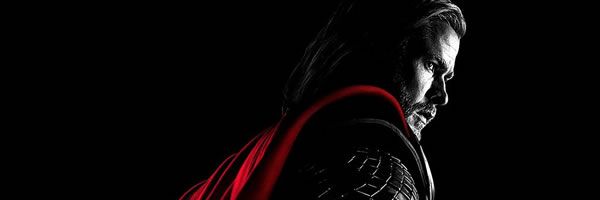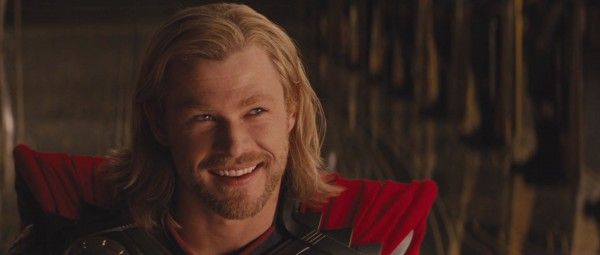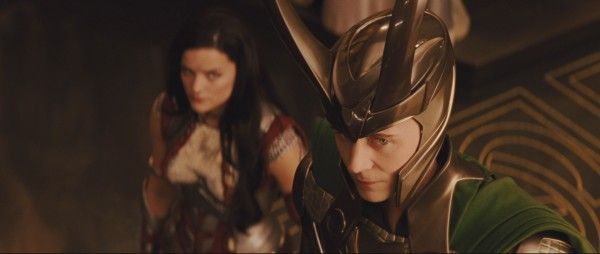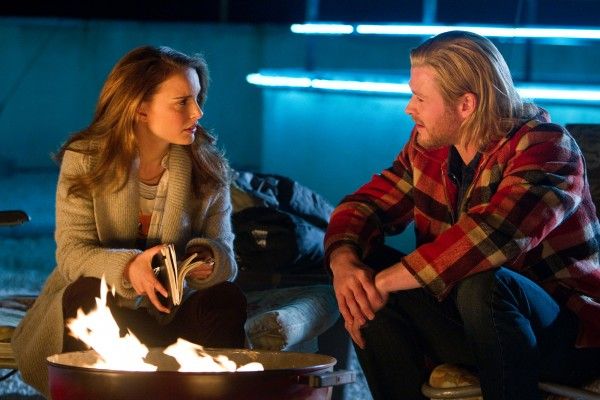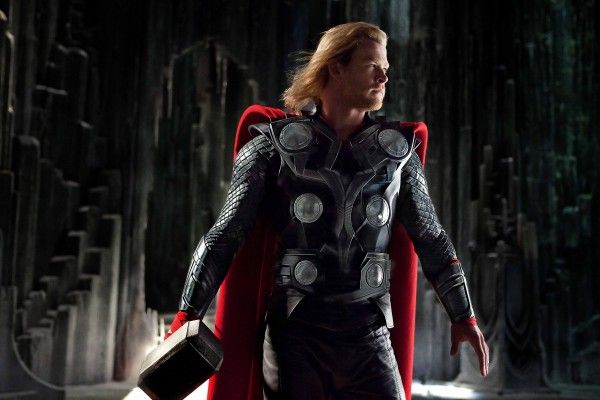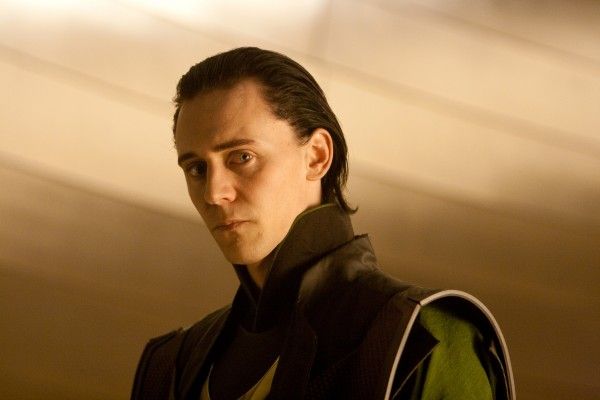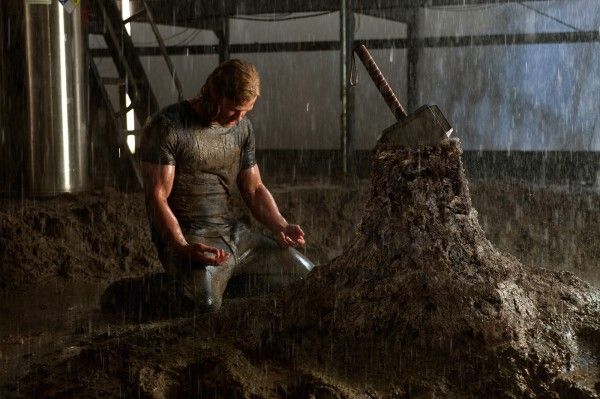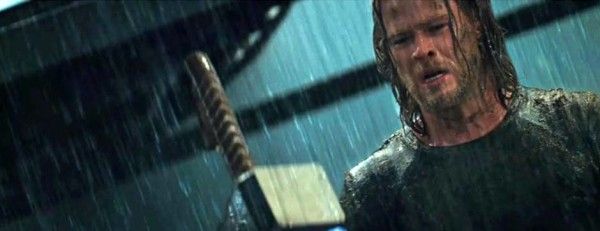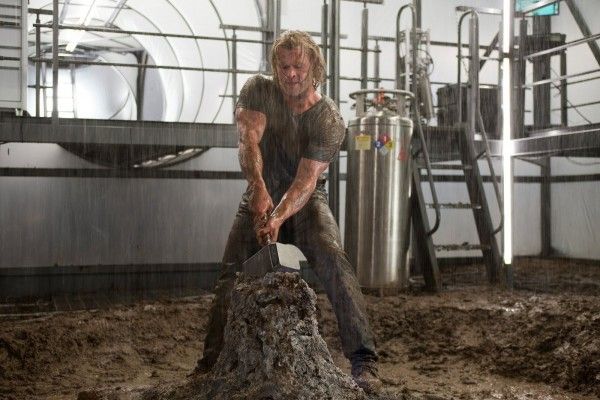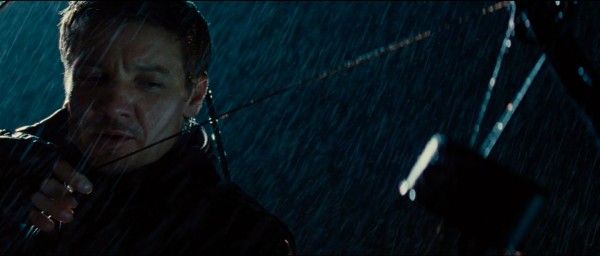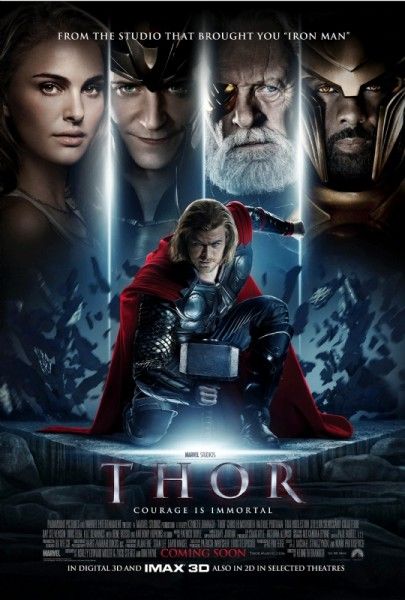[This is a re-post of my retrospective series in which I take a look back at the Marvel Cinematic Universe. These articles do not contain spoilers for unreleased Marvel movies. If you know any spoilers about the unreleased Marvel movies, please do not post them in the comments section.]
Iron Man 2 may have stumbled badly, but Marvel didn’t fall. Instead, it took an important step forward with Thor, a movie that tries to be both cautious and ambitious in taking viewers on their biggest leap forward. In 2011, over a decade after X-Men, there was still a level of apprehension with superhero movies. Marvel in particular needed to figure out how to take a completely different superhero and make him live in the same world as another franchise. The plan for The Avengers was truly in motion, and Thor needed to show that the worlds could be connected yet distinct.
The unique setting was also a challenge because Thor is a magical space alien. He comes from a different galaxy (or “realm”) and he’s a Norse god. He couldn’t be further away from any other superhero, but he needed to conceivably live in the same universe as a man who dresses up in super-powered armor. Both are extraordinary, but no matter where Tony Stark goes, he’s still from the planet Earth and came from the traditional origin story of someone who acquires power and uses it for good (he continues to grapple with the “great responsibility” part of the “great power”).
Thor (Chris Hemsworth) starts out at the same place as Tony Stark, but whereas Tony’s cockiness is what fuels his need to be better, Thor has to learn humility. Unlike most superheroes, Thor needs to have his powers taken away in order to appreciate them and discover what it means to be heroic. It’s a big leap for a character who starts out going to a foreign land and murdering its people because they insulted him.
On the surface, it would seem like the stuff on Asgard would be the biggest challenge, but that’s where Thor feels most comfortable, which isn’t too surprising given director Kenneth Branagh’s experience directing Shakespeare and costume dramas. I admire the boldness of Asgard and the desire to make it look both regal yet alien. Odin’s (Anthony Hopkins) castle looks like a giant pipe organ, and the movie doesn’t blink twice at giving Loki (Tom Hiddleston) a helmet with giant horns on it. Thor’s costume and production design doesn’t run from the comics, and that fearlessness became a sign of Marvel’s aesthetic. The studio and its filmmakers worked hard to find a way to blend the fantastical with reality, and didn’t get hung up on explaining minutiae.
The studio also knew where to make concessions. Some of the names had to be changed or muttered, like “Rainbow Bridge” being uttered once and officially called “Bifröst”, which is also an accurate name, but also one that sounds more regal and less like something out of Care Bears. However, when you have a cool name like “Frost Giants”, the movie goes for it as opposed to calling them “Citizens of Jotenheim” or something similar (which would humanize them, and the movie definitely doesn’t want to do that).
The biggest challenge in Thor from a storytelling point was trying to find a connection from magic to science. If Thor is magic, then he can do anything and solve any problem. Thor cleverly grounded his powers by explaining that “magic's just science we don't understand yet,” and he comes from a place “where they are one and the same.” So while he’s technically from an advanced alien race, the movie cleverly recontextualizes the character so that his world and background are now relatable even though it’s simply a mitigated risk: Marvel wasn’t sure the audience would accept space magic, but knew they would accept “science.”
But even more than trying to explain how Asgard works, the most crucial part of Thor was casting. Incredible Hulk aside, Marvel never miscasts their heroes. Once the movie introduces Thor at his coronation ceremony, we’re instantly on board with Hemsworth. He’s as cocky as Tony Stark but with arrogance in place of smugness. He holds a hammer of the gods, and flips it like a toy. This is Stark Expo in another realm, and while the star may pretend it’s about the greater good, he knows it’s all about him because nothing in this world is more important than his ego.
It’s a herculean task to get a bunch of comic book fans on board with a boastful jock who starts the film wanting to kill a bunch of foreigners. We have the expectation that we’ll automatically like heroes, and that if these heroes are “flawed” then it’s in a sympathetic fashion like a nerdy kid who gets beat up. Tony Stark and Thor are not likable people; their actors make them lovable.
Hemsworth was basically an unknown before Thor. He had a brief appearance as Kirk’s dad in Star Trek, and came out of the long-running Australian soap opera Home and Away, which also produced stars Heath Ledger, Isla Fisher, Guy Pearce, Jason Clarke, and Naomi Watts to name a few. There are plenty of handsome, muscular actors in the world; Chris Hemsworth’s performance in Thor shows the difference between an actor with charisma and one who’s just good-looking. We needed to buy Thor as a god and as a man, and Hemsworth sold us on both.
Watching the test footage of Tom Hiddleston auditioning for Thor is bizarre because it’s not only difficult to imagine someone other than Hemsworth playing the character; it’s impossible to imagine anyone but Hiddleston playing Loki. Like his co-star, he was largely an unknown to American audiences (feel free to keep your “I watched Wallander!” comments to yourself), but no Marvel Cinematic Universe (MCU) villain has connected to audiences like Loki.
While every Marvel villain craves “power”, Loki’s hunger for it comes from a clearly defined place of jealousy and pain. The character’s mischievousness may be scaled back, but it’s in service of a more compelling personality. There’s a tragic element to Loki, and in Thor he’s a sympathetic figure even though the script puts his actions into the retread of “the traitorous compatriot” a la Iron Monger. Hiddleston pours all of the character’s hurt into the performance so that even at the end when he’s goading Thor into a fistfight (the only action climax Marvel could seemingly manage leading up to The Avengers), he’s doing it with tears in his eyes. When Loki falls into the abyss, it’s because he makes an active choice to do so.
Thor is about laying groundwork, and the story and even the style are secondary. The movie needed to hit a checklist: 1) Make audiences accept Asgard and how it relates to Earth; 2) Cast Thor; 3) Cast Loki; 4) flesh out S.H.I.E.L.D. and their responsibilities. That’s it. It’s a list of chores and Branagh’s accomplishment is making them feel like organic parts of the narrative.
I admire that Thor is counter-intuitive. It’s the inverse of Iron Man not only in that the hero has to learn humility, but also it’s a superhero movie that takes away the hero’s superpowers. Thor goes from a guy who can take out a bevy of frost giants to someone who is felled by cars and sedatives. The “humbling” storyline for a hero isn’t unique overall, but it is an outlier among superhero origin stories. It makes Thor a fish-out-of-water movie that rests largely on Hemsworth’s endearing performance because ultimately is still comes back to “What makes a hero?” and the answer is (as it is for most Marvel movies) a willingness to die in order to save others. If “Whosoever holds this hammer, if he be worthy, shall possess the power of Thor,” and worthiness is determined by self-sacrifice, then Iron Man, Captain America, and all of the Guardians of the Galaxy should get to wield Mjolnir.
Thor is an accomplished film, but it’s also shoddily constructed and poorly made. Marvel still hadn’t quite zeroed in on how it wanted its movies shot and composed, and Branagh made an unfortunate decision when it came to shooting the picture. Branagh suffered the same issue Ang Lee did on Hulk, which is that he misunderstood how to adapt a comic book and tried to literally translate its visual language to the screen through cinematography and editing.
In a comic book, you have a locked, two-dimensional space to convey information. You have no music and no long takes. The language of cinema and comics are similar, but not identical, and the trick is finding a way to bridge the two. Branagh tried to find that bridge through constant and arbitrary canted angles. There was no Marvel “house style” yet because there weren’t enough movies to establish that look. There was only Iron Man, The Incredible Hulk, and Iron Man 2, and Thor certainly needed its own feel when the character was on Earth. But rather than trust that the character and the performances were enough, Branagh slathered on constantly distracting cinematography. This is in addition to the CGI looking fairly cheap (though to be fair, so was Marvel Studios at the time) when they land on Jotenheim and you’re watching Loki, Sif (Jaimie Alexander), and the Warriors Three flee from green screen that’s as convincing as if they were using a rear projection. The film also has trouble balancing its story from the start as it begins in medias res before moving to a prologue, and then has its big action scene feature the hero going to another planet and slaughtering its inhabitants. The Frost Giants are jerks, but in an insubstantial way. They’re an ornery Other so they have to die, and we’re meant to get sucked up into the might of Thor’s powers rather than feel the gravity of a character who’s starting a war. By keeping the antagonists one-dimensional it absolves Thor of any deep guilt or punishment.
Then the story takes its superhero and removes all of his superpowers for the majority of the film. The Asgard scenes become the only aspect propping up the character’s majesty and he’s stuck in New Mexico, a setting that’s arguably fitting because of a Roswell/Area 51 connection; but you don’t have to listen closely to hear the call of the state’s tax incentives. So there’s a de-powered hero, a villain who doesn’t really have any superpowers, and an underdeveloped romance plot as well. Thor and Jane Foster (Natalie Portman) do not have a love that will stand the test of time. They’ve been on some nice dates and learned a little about each other’s worlds, which is more to the audience’s benefit rather than forging a connection between two characters. The S.H.I.E.L.D. stuff works far better than it did in Iron Man 2, and Agent Coulson (Clark Gregg) becomes a full character in his own right, but Marvel overplays its hand when it tries to squeeze in Hawkeye (Jeremy Renner). You can tell Renner was nowhere near any other actor (his scenes were added in reshoots), and his only job was to stand in a bucket, draw an arrow, and inform us that he’s playing a guy who follows orders but also has a bit of an attitude. He’s to Thor what Black Widow (Scarlett Johansson) was to Iron Man 2—a “The Avengers: Coming Soon” sign in human form.
But aside from the cinematography and the Hawkeye cameo, the film’s flaws didn’t bother me that much on my most recent viewing. I want to like Thor so I wouldn’t call my admiration begrudging as much as it’s qualified. While breaking a movie down into franchise objectives isn’t the most romantic way to appreciate a film, those franchise objectives are what drive Thor and create its strongest aspects. If I have to sit through a superhero movie where the superhero doesn’t have his powers, I want that hero to be played by Chris Hemsworth. If I’m only going to see a sliver of Asgard, I want Loki to be in every sliver. Thor doesn’t give us everything we want, but it does give the audience, and the MCU, everything it needs. Marvel’s next film went far beyond the necessary. It was an accomplished picture in its own right that got to exist largely on its own terms while also cementing the studio’s tone and style with a superhero who was unabashedly heroic.
Previous Entries:

